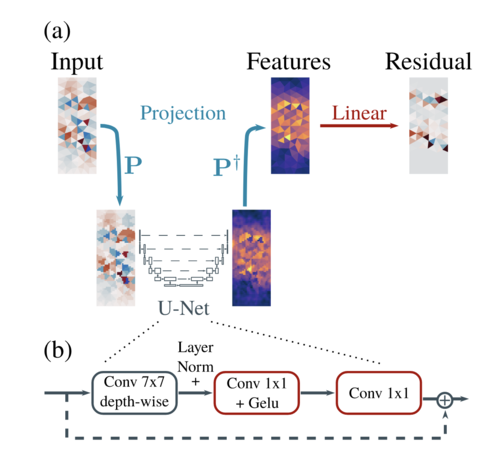Tobias Finn et al. have published a new paper paper related to their work in SASIP-WP4:
Tobias Sebastian Finn, Charlotte Durand, Alban Farchi, Marc Bocquet, Yumeng Chen, Alberto Carrassi and Véronique Dansereau.
https://doi.org/10.5194/egusphere-2022-1342.

Fig.3 (from Finn et al 2023): In our deep learning approach (a), the input fields are projected by a linear projection operator P from their triangular space into a Cartesian space that has a higher resolution, where the U-Net extracts features. Back-projected into triangular space by the pseudo-inverse of the linear projection operator P†, these features are linearly combined to obtain the predicted residuals. The U-Net consists of multiple ConvNeXt-like blocks (b). A first convolutional layer extracts depth-wise (i.e. without mixing the channels) spatial features with a kernel size of 7 × 7. A 1 × 1 convolution with a Gaussian error linear unit (Gelu) activation function combines the layer-normalised channels. Together with a last 1 × 1 convolution, this path mixes the channels. Finally, a residual connection from the input of the block is added to the output of the block.




